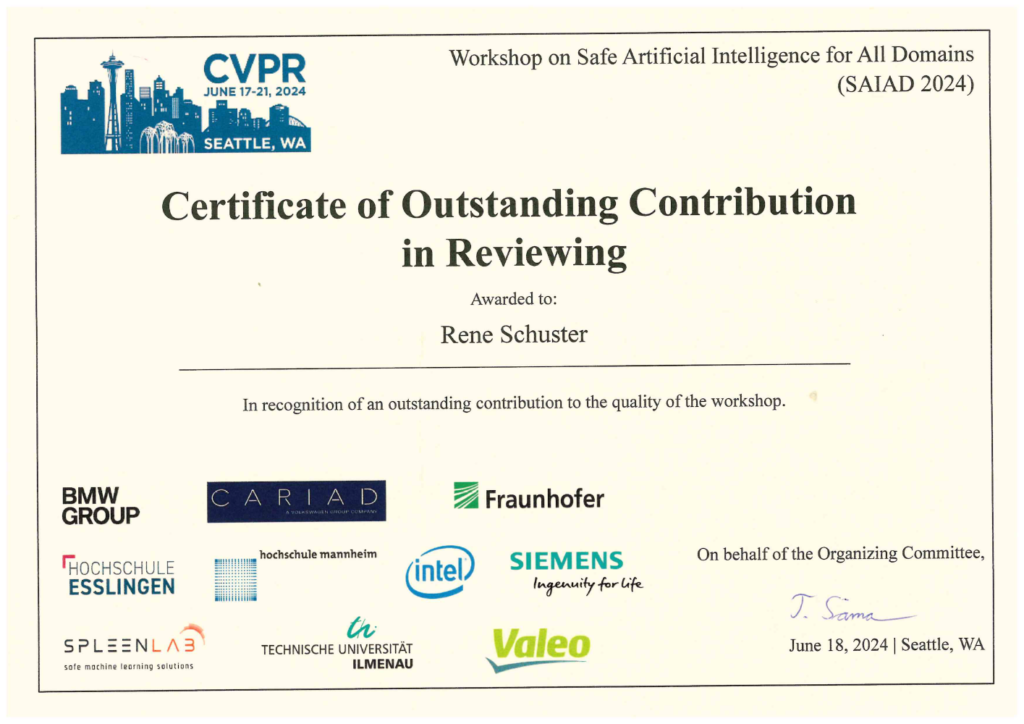
The 6th workshop on Safe Artificial Intelligence for All Domains was held this year in conjunction with CVPR in Seattle. René Schuster is a permanent member of the program committee since 2020.


The 6th workshop on Safe Artificial Intelligence for All Domains was held this year in conjunction with CVPR in Seattle. René Schuster is a permanent member of the program committee since 2020.
We are excited to share that the Augmented Vision group got two papers accepted at the IEEE conference on Automatic Face and Gesture Recognition (FG 2024), the premier international forum for research in image and video-based face, gesture, and body movement recognition. FG 2024 took place in Istanbul, Turkey, from the 27th to 31st of May.
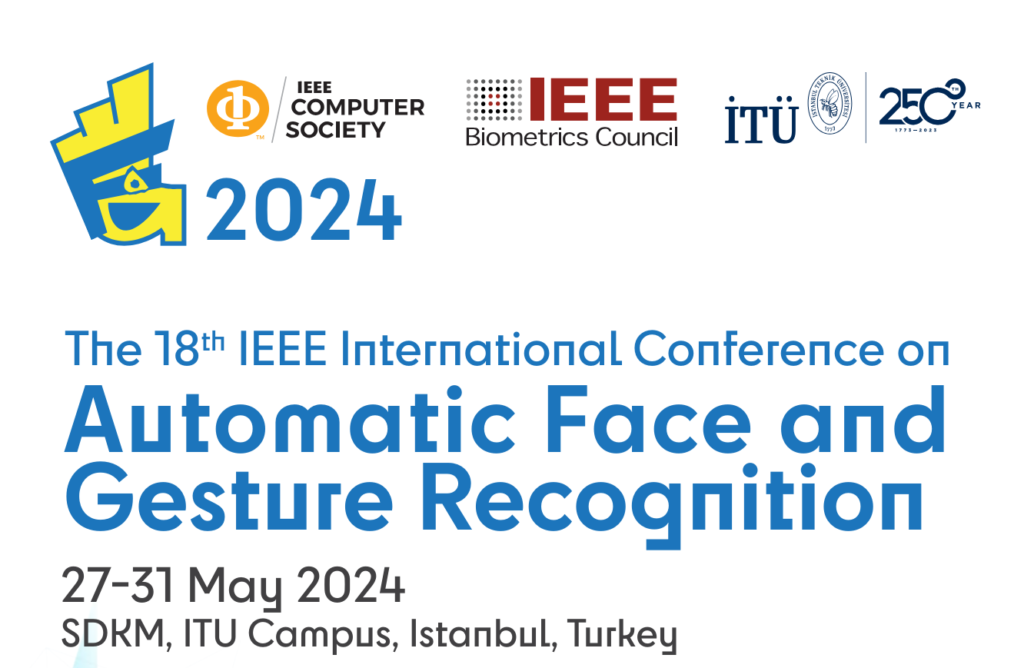
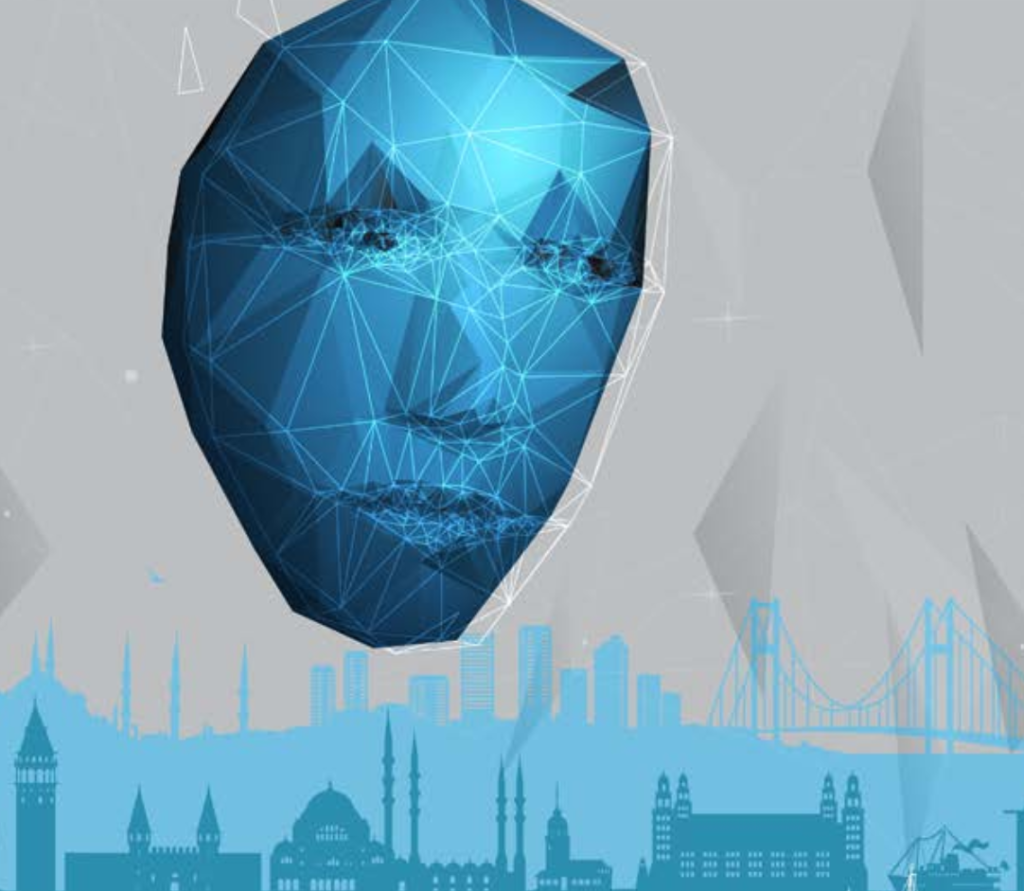
Homepage: https://fg2024.ieee-biometrics.org/
The accepted papers are:
Jilliam Maria Diaz Barros, Chen-Yu Wang, Jameel Malik, Abdalla Elsayed Abdou Elsayed Mohamed Arafa, Didier Stricker
Jilliam Maria Diaz Barros, Jason Raphael Rambach, Pramod Murthy, Didier Stricker
Contact: Jilliam Diaz Barros, Dr. Jason Rambach
The 4th IEEE Workshop On AI Hardware: Test, Reliability And Security (AI-TREATS) held on May 23th and 24th 2024 was a great success!
The event, co-located with the 29th IEEE European Test Symposium, explored the recent advances in edge AI under the aspects of security, trust and testing. The workshop gathered many researchers with 15 presented papers, and a keynote by Prof. Yanjing Li (University of Chicago, USA).
On the opening day, Alain Pagani participated to a Panel Discussion about Networks of Excellence on Edge AI in Europe. Together with Mateo Sonza Reorda (Politecnico di Torino Italy, FAIR project) and Ovidiu Vermesan (SINTEF, Norway, EdgeAI project), he could present dAIEDGE and the main aspects of the Network of Excellence on Edge AI.
The workshop chaired by Annachiara Ruospo (Politecnico di Torino, Italy) and Haralampos Stratigopoulos (Sorbonne Universtié, France) was co-sponsored and co-organised by FAIR, dAIEDGE and EdgeAI
Many thanks to the all participants!
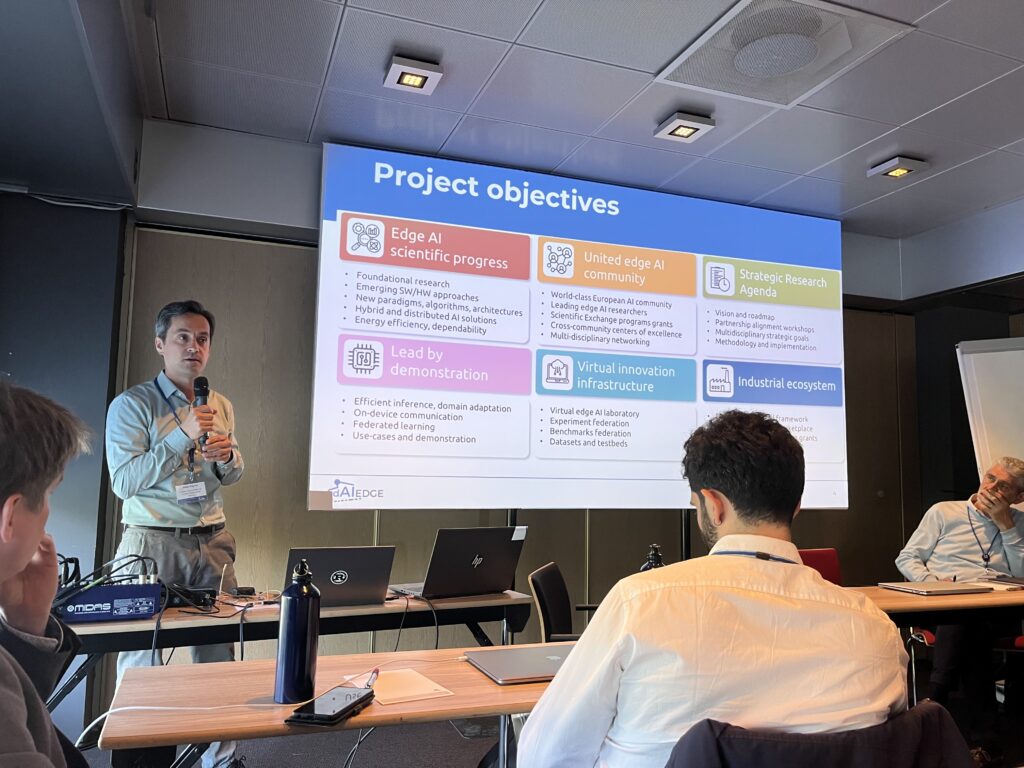
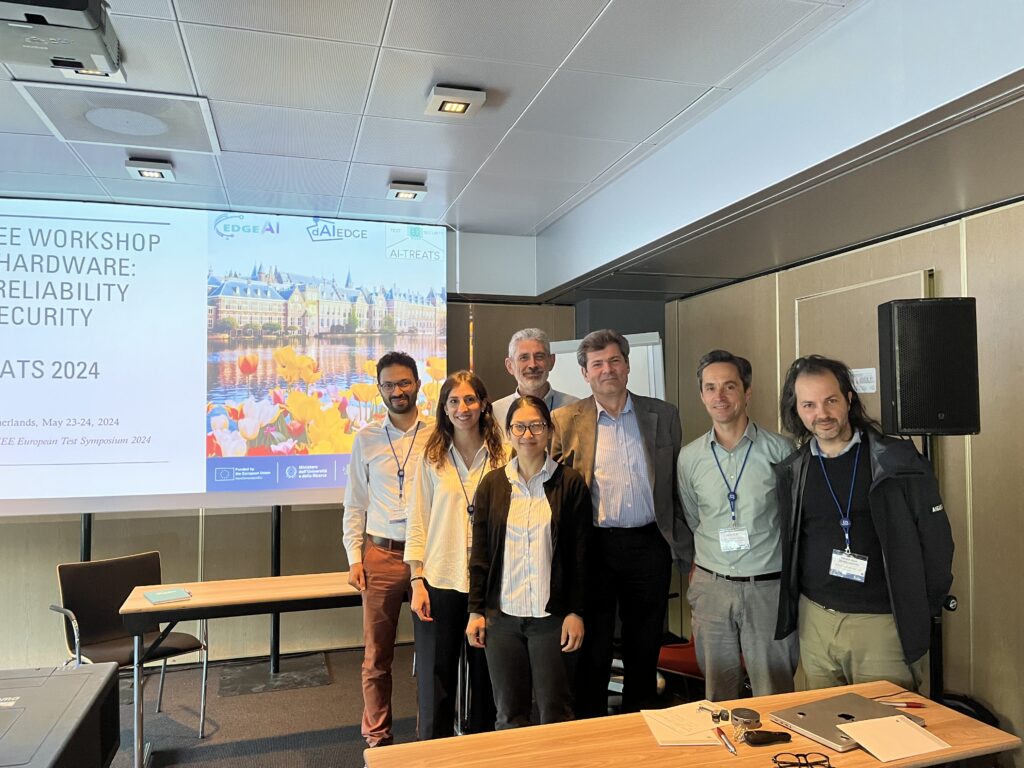
Dr. Jason Rambach, coordinator of the EU Horizon Project HumanTech , organized the 2nd workshop on “AI and Robotics in Construction” at the European Robotics Forum 2024 in Rimini, Italy (13.3-15.3) in cooperation with the construction Robotics projects Beeyonders and RobetArme and the Tech4Construction cluster.
The workshop included presentations on the current state of the 3 organizing projects (HumanTech, Beeyonders and RobetArme) from their coordinators, followed by technical presentations from project partners (KU Leuven, SINTEF, ITAINNOVA) on topics such as robotic vision and navigation and human-robot interaction for construction, and closing with a user evaluation insights presentation by the German Federal Institute for Occupational Safety and Health (BAUA). The presentations were followed by a very interesting round table discussion on the challenges of robotic projects in construction.
Workshop schedule: https://humantech-horizon.eu/wp-content/uploads/2024/02/AI-and-Robotics-in-Construction_ERF2024_Brochure.pdf
HumanTech project: https://humantech-horizon.eu/
Contact: Dr. Jason Rambach
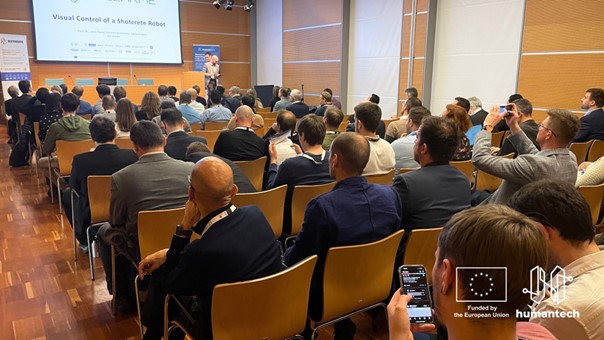
We are proud to announce that the researchers of the department Augmented Vision will present 6 papers at the upcoming CVPR conference taking place Mon Jun 17th through Fri Jun 21st, 2024 at the Seattle Convention Center, Seattle, USA.
The CVPR conference is the premier international conference in computer vision and pattern recognition.
The 6 papers are:
MiKASA: Multi-Key-Anchor Scene-Aware Transformer for 3D Visual Grounding
Chun-Peng Chang, Shaoxiang Wang, Alain Pagani, Didier Stricker
HiPose: Hierarchical Binary Surface Encoding and Correspondence Pruning for RGB-D 6DoF Object Pose Estimation
Yongliang Lin, Yongzhi Su, Praveen Nathan, Sandeep Inuganti, Yan Di, Martin Sundermeyer, Fabian Manhardt, Didier Stricker, Jason Rambach, Yu Zhang
SG-PGM: Partial Graph Matching Network with Semantic Geometric Fusion for 3D Scene Graph Alignment and Its Downstream Tasks
Yaxu Xie, Alain Pagani, Didier Stricker
Sparse Semi-Detr: Sparse Learnable Queries for Semi-Supervised Object Detection
Tahira Shehzadi, Khurram Azeem Hashmi, Didier Stricker, Muhammad Zeshan Afzal
CAD-SIGNet: CAD Language Inference from Point Clouds using Layer-wise Sketch Instance Guided Attention
Mohammad Sadil Khan, Elona Dupont, Sk Aziz Ali, Kseniya Cherenkova, Anis Kacem, Djamila Aouada
EventEgo3D: 3D Human Motion Capture from Egocentric Event Streams
Christen Millerdurai, Hiroyasu Akada, Jian Wang, Diogo Luvizon, Christian Theobalt, Vladislav Golyanik
Congratulations to the authors for this great achievement!

DFKI Augmented Vision researcher Mahdi Chamseddine received the Best Industrial Paper award at International Conference on Pattern Recognition Applications and Methods (ICPRAM) 2024 for the paper:
CaRaCTO: Robust Camera-Radar Extrinsic Calibration with Triple Constraint Optimization. Mahdi Chamseddine, Jason Rambach, Didier Stricker, ICPRAM 2024
The paper introduces a simplified and improved extrinisic calibration approach for camera-radar systems without the need for external sensing and with additional optimization constraints for added robustness.
DFKI Augmented Vision presented 3 other papers at ICPRAM 2024.

Contact: Mahdi Chamseddine, Dr. Jason Rambach
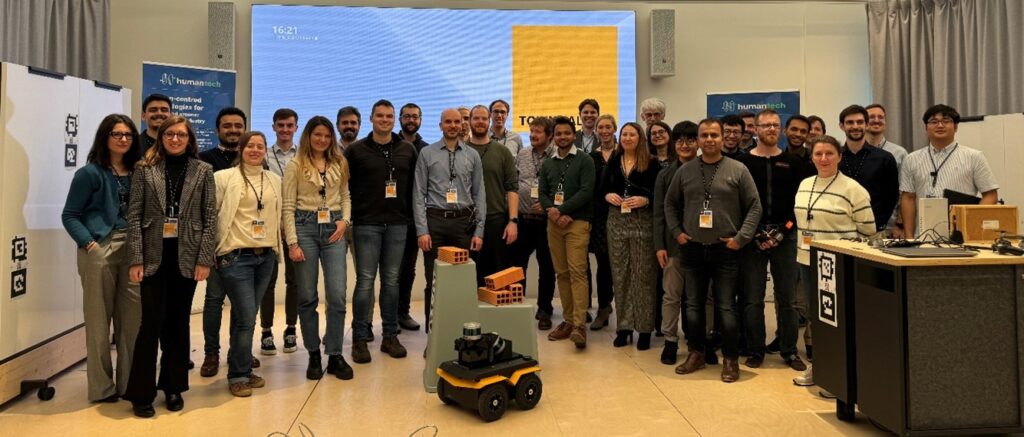
The HumanTech project, coordinated by DFKI Augmented Vision – Dr. Jason Rambach, has reached an important milestone: A highly successfully Mid-Term Review Meeting!
From 22 to 24 January 2024, representatives from the 21 partner organisations that comprise the consortium gathered in Zurich, Switzerland (hosted by the partner Implenia) to comprehensively review its midterm progress since starting in June 2022. The process has helped the consortium to align priorities to further its mission — to achieve breakthroughs in cutting-edge technologies, contributing to a safer, more efficient and digitized European construction industry. The review meeting consisted of a construction site visit, presentations of the project progress for all work packages and an exciting demo event with live HumanTech technologies.
More on HumanTech: https://humantech-horizon.eu/news/
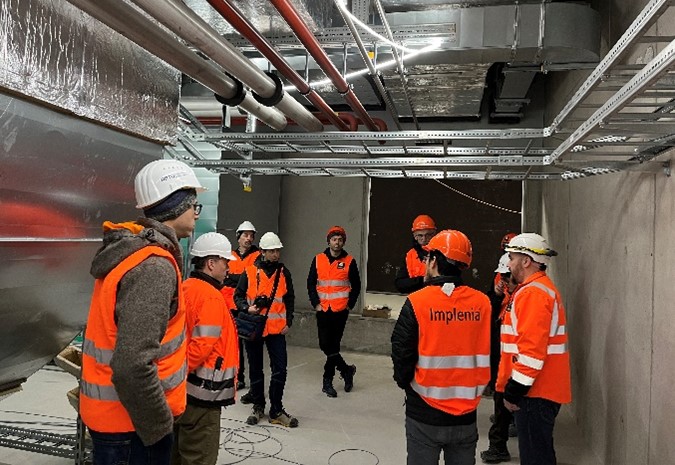
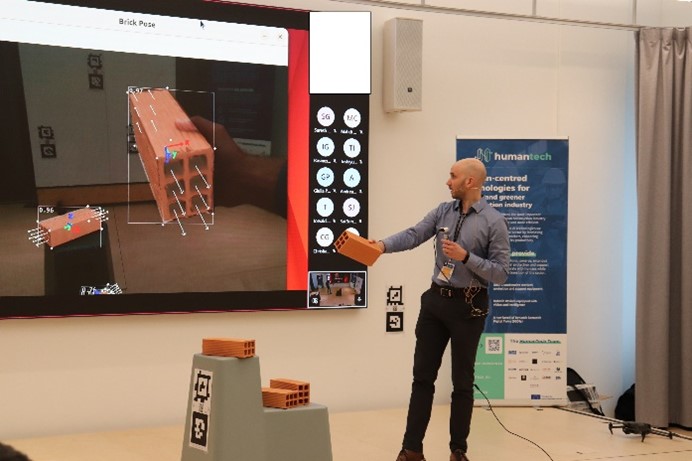
Contact: Dr. Jason Rambach
We are happy to announce that the Augmented Vision group presented 2 papers in the IEEE/CVF Winter Conference on Applications of Computer Vision (WACV) that took place from the 4th -8th January 2024 in Waikoloa, Hawaii.
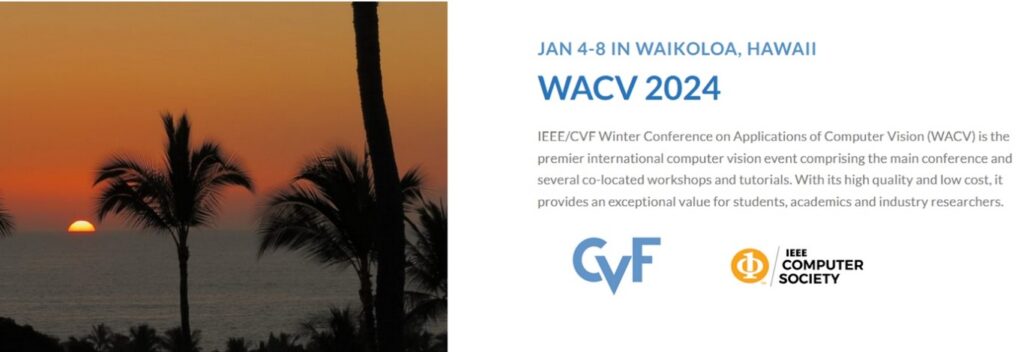
Homepage: https://wacv2024.thecvf.com/
The 2 accepted papers are:
Contact: Dr. Jason Rambach, Dr. Alain Pagani
The BERTHA project receives EU funding to develop a Driver Behavioral Model that will make autonomous vehicles safer and more human-like
The Horizon Europe project BERTHA kicked off on November 22nd-24th in Valencia, Spain. The project has been granted €7,981,799.50 from the European Commission to develop a Driver Behavioral Model (DBM) that can be used in connected autonomous vehicles to make them safer and more human-like. The resulting DBM will be available on an open-source HUB to validate its feasibility, and it will also be implemented in CARLA, an open-source autonomous driving simulator.
The BERTHA consortium is formed by 14 partners from 6 different countries, coordinated by Instituto de Biomecánica de Valencia (IBV) (ES). The other partners are Institut Vedecom (FR), Université Gustave Eiffel (FR), German Research Center for Artificial Intelligence (DE), Computer Vision Center (ES), Altran Deutschland (DE), Continental Automotive France (FR), CIDAUT Foundation (ES), Austrian Institute of Technology (AT), Universitat de València (ES), Europcar International (FR), FI Group (PT), Panasonic Automotive Systems Europe (DE) and the Korea Transport Institute (KOTI).
The project celebrated its kick-off meeting on November 22nd to 24th, hosted by the coordinator Instituto de Biomecánica de Valencia (IBV) at its offices in Valencia, Spain. During the event, all partners met each other, shared their technical backgrounds and presented their expected contributions to the project.
The need for a Driver Behavioral Model in the CCAM industry
The industry of Connected, Cooperative, and Automated Mobility (CCAM) presents important opportunities for the European Union. However, its deployment requires new tools that enable the design and analysis of autonomous vehicle components, together with their digital validation, and a common language between Tier vendors and OEM manufacturers.
One of the shortcomings arises from the lack of a validated and scientifically based Driver Behavioral Model (DBM) to cover the aspects of human driving performance, which will allow to understand and test the interaction of connected autonomous vehicles (CAVs) with other cars in a safer and predictable way from a human perspective.
Therefore, a Driver Behavioral Model could guarantee digital validation of the components of autonomous vehicles and, if incorporated into the ECUs software, could generate a more human-like response of such vehicles, thus increasing their acceptance.
The contributions of BERTHA to the autonomous vehicles industry and research
To cover this need in the CCAM industry, the BERTHA project will develop a scalable and probabilistic Driver Behavioral Model (DBM), mostly based on Bayesian Belief Network, which will be key to achieving safer and more human-like autonomous vehicles.
The new DBM will be implemented on an open-source HUB, a repository that will allow industrial validation of its technological and practical feasibility, and become a unique approach for the model’s worldwide scalability.
The resulting DBM will be translated into CARLA, an open-source simulator for autonomous driving research developed by the Spanish partner Computer Vision System. The implementation of BERTHA’s DBM will use diverse demos which allow the building of new driving models in the simulator. This can be embedded in different immersive driving simulators as HAV from IBV.
BERTHA will also develop a methodology which, thanks to the HUB, will share the model with the scientific community to ease its growth. Moreover, its results will include a set of interrelated demonstrators to show the DBM approach as a reference to design human-like, easily predictable, and acceptable behaviour of automated driving functions in mixed traffic scenarios.
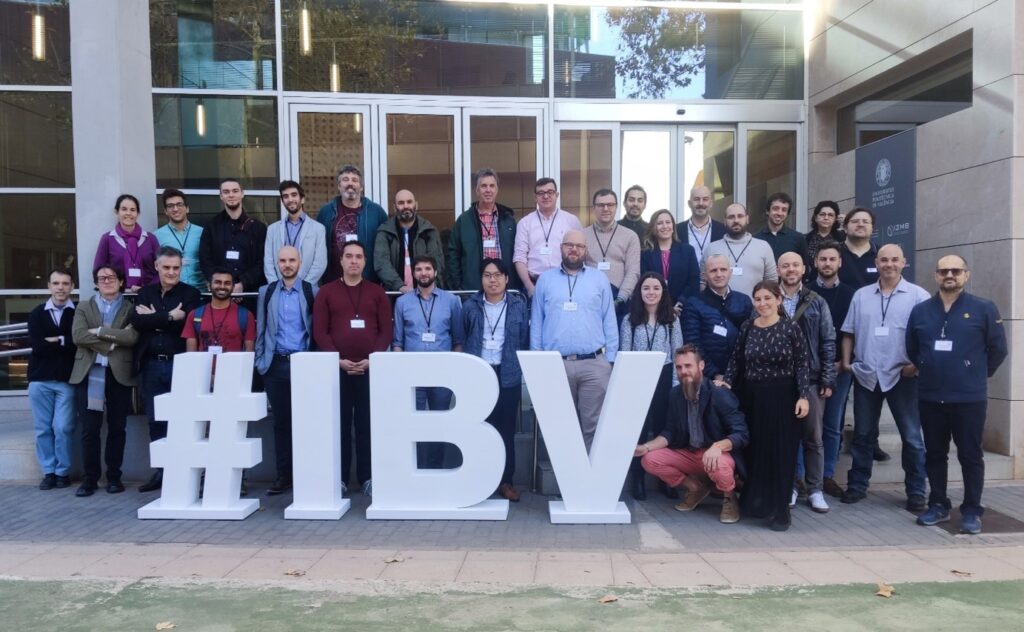
Contacts: Dr. Jason Rambach (DFKI AV)
Dr. Christian Müller (DFKI ASR)
Igor Vozniak (DFKI ASR)
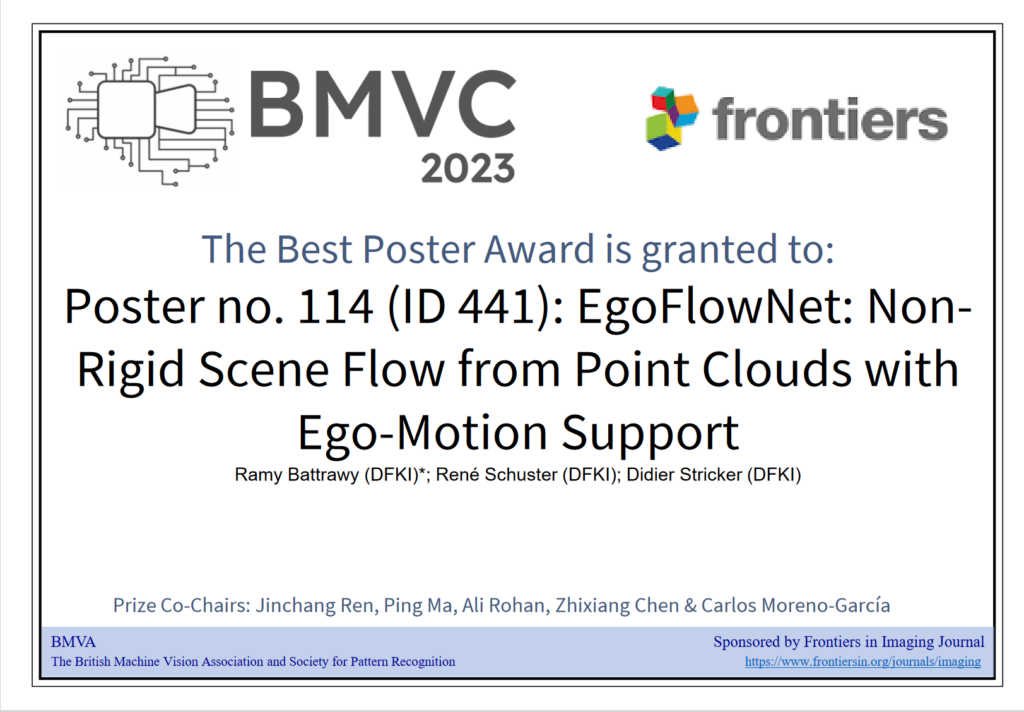
Congratulations to Ramy Battrawy for his best poster Award at BMVC 2023, https://bmvc2023.org, for his paper.
“EgoFlowNet: Non-Rigid Scene Flow from Point Clouds with Ego-Motion Support”
Ramy Battrawy (DFKI),* René Schuster (DFKI), Didier Stricker (DFKI), BMVC 2023
Please check the paper and the video under: https://proceedings.bmvc2023.org/441/
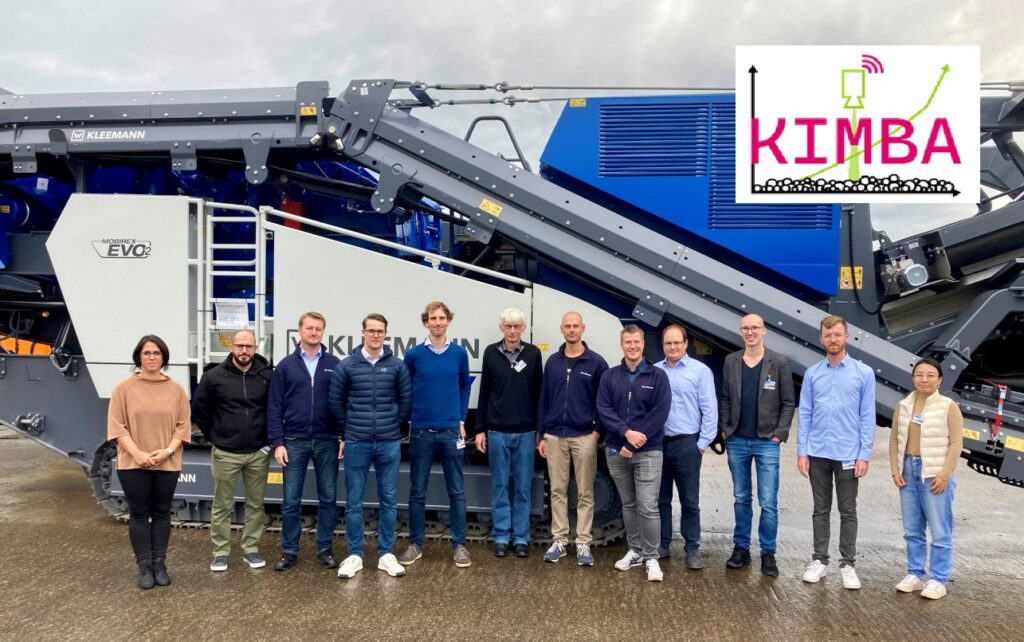
Teilnehmer des Kick-Off-Treffens des KIMBA Forschungsvorhabens stehen vor einem mobilen Prallbrecher von Projektpartner KLEEMANN. // Participants of the kick-off meeting of the KIMBA research project standing in front of a mobile impact crusher from project partner KLEEMANN
[Deutsche Version]
Im Rahmen der Digital GreenTech Konferenz 2023 in Karlsruhe wurden kürzlich 14 neue Forschungsprojekte aus den Bereichen Wasserwirtschaft, nachhaltiges Landmanagement, Ressourceneffizienz und Kreislaufwirtschaft vorgestellt, darunter auch Kimba. Hierbei arbeiten wir gemeinsam mit unseren Projektpartnern an einer KI-basierten Prozesssteuerung und automatisiertem Qualitätsmanagement für das Recycling von Bau- und Abbruchabfällen in Echtzeit. Das spart Kosten, Zeit sowie Ressourcen und schont die Umwelt. So unterstützen wir die Baubranche auf ihrem Weg in die Zukunft.
Weitere Informationen zu KIMBA finden sich unter: https://www.ants.rwth-aachen.de/cms/IAR/Forschung/Aktuelle-Forschungsprojekte/~bdikqm/KIMBA/
Kontakt: Dr. Jason Rambach , Dr. Bruno Mirbach
[English Version]
At the Digital GreenTech Conference 2023 in Karlsruhe, 14 new research projects in the fields of water management, sustainable land management, resource efficiency and circular economy were recently presented, including Kimba. Here, we are working with our project partners on AI-based process control and automated quality management for recycling construction and demolition waste in real time. This saves costs, time and resources and protects the environment. This is how we support the construction industry on its way into the future.
Further Information to KIMBA can be found under: https://www.ants.rwth-aachen.de/cms/IAR/Forschung/Aktuelle-Forschungsprojekte/~bdikqm/KIMBA/
Contact: Dr. Jason Rambach, Dr. Bruno Mirbach
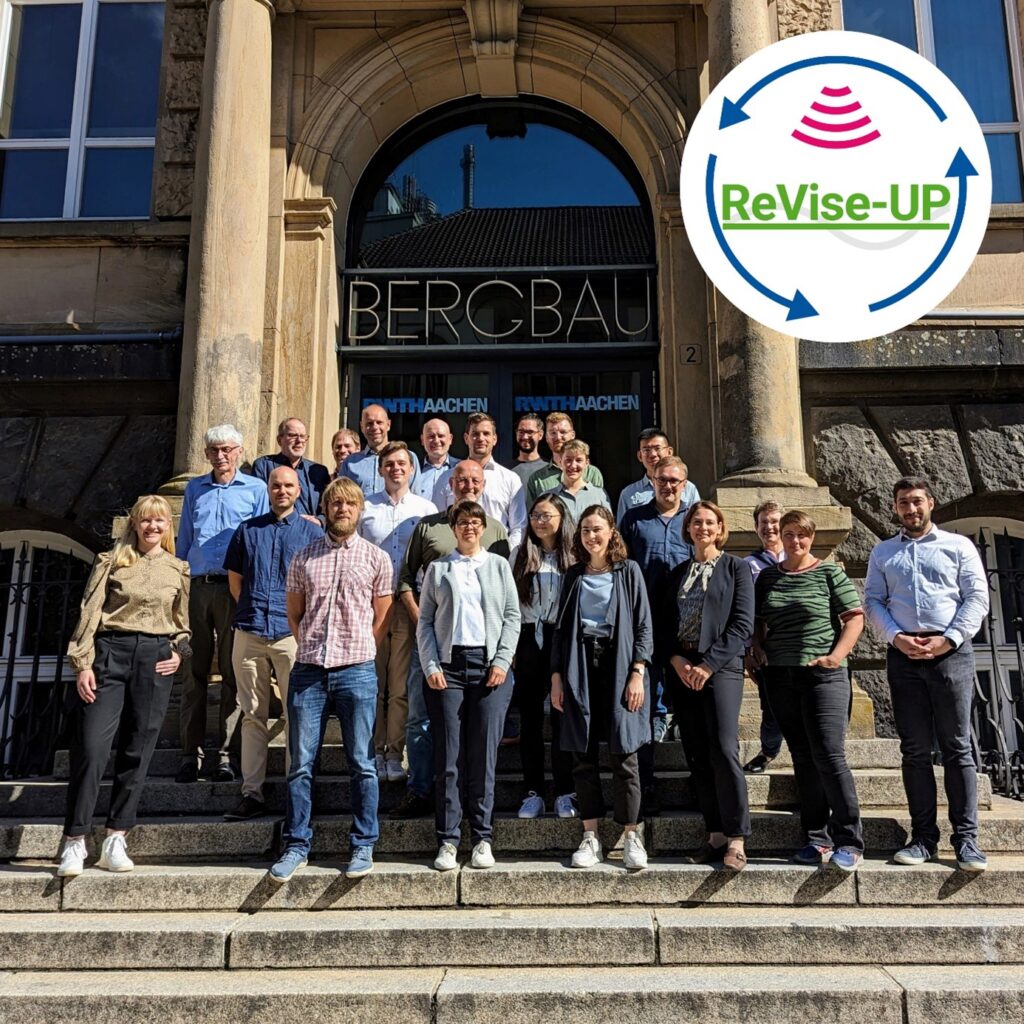
Alt-Text: Teilnehmer des Kick-Off-Treffens des ReVise-UP Forschungsvorhabens stehen vor dem Bergbaugebäude der RWTH Aachen University. // Participants of the kick-off meeting of the ReVise-UP research project stand in front of the mining building of RWTH Aachen University.
Deutsche Version
Forschungsvorhaben „ReVise-UP“ zur Verbesserung der Prozesseffizienz des werkstofflichen Kunststoffrecyclings mittels Sensortechnik gestartet
Im September 2023 startete das vom BMBF geförderte Forschungsvorhaben ReVise-UP („Verbesserung der Prozesseffizienz des werkstofflichen Recyclings von Post-Consumer Kunststoff-Verpackungsabfällen durch intelligentes Stoffstrommanagement – Umsetzungsphase“). In der vierjährigen Umsetzungsphase soll die Transparenz und Effizienz des werkstofflichen Kunststoffrecyclings durch Entwicklung und Demonstration sensorbasierter Stoffstromcharakterisierungsmethoden im großtechnischen Maßstab gesteigert werden.
Auf Basis der durch Sensordaten erzeugten Datentransparenz soll das bisherige Kunststoffrecycling durch drei Effekte verbessert werden: Erstens sollen durch die Datentransparenz positive Anreize für verbesserte Sammel- und Produktqualitäten und damit gesteigerte Rezyklatmengen und -qualitäten geschaffen werden. Zweitens sollen sensorbasiert erfasste Stoffstromcharakteristika dazu genutzt werden, Sortier-, Aufbereitungs- und Kunststoffverarbeitungsprozesse auf schwankende Stoffstromeigenschaften adaptieren zu können. Drittens soll die verbesserte Datenlage eine ganzheitliche ökologische und ökonomische Bewertung der Wertschöpfungskette ermöglichen.
An ReVise-UP beteiligen sich insgesamt 18 Forschungsinstitute, Verbände und Industriepartner. Das Bundesministerium für Bildung und Forschung (BMBF) fördert ReVise-UP im Rahmen der Förderrichtlinie „Ressourceneffiziente Kreislaufwirtschaft – Kunststoffrecyclingtechnologien (KuRT)” mit 3,92 Mio. €.
Weitere Informationen zu ReVise-UP finden sich unter: https://www.ants.rwth-aachen.de/cms/IAR/Forschung/Aktuelle-Forschungsprojekte/~bdueul/ReVise-UP/
Verbundpartner in ReVise-UP sind:
Als assoziierte Partner wird ReVise-UP unterstützt von:
Kontakt: Dr. Jason Rambach , Dr. Bruno Mirbach
English version
Research project “ReVise-UP” started to improve the process efficiency of mechanical plastics recycling using sensor technology
In September 2023, the BMBF-funded research project ReVise-UP (“Improving the process efficiency of mechanical recycling of post-consumer plastic packaging waste through intelligent material flow management – implementation phase”) started. In the four-year implementation phase, the transparency and efficiency of mechanical plastics recycling is to be increased by developing and demonstrating sensor-based material flow characterization methods on an industrial scale.
Based on the data transparency generated by sensor data, the current plastics recycling shall be improved by three effects: First, data transparency is intended to create positive incentives for improved collection and product qualities and thus increased recyclate quantities and qualities. Second, sensor-based material flow characteristics are to be used to adapt sorting, treatment and plastics processing processes to fluctuating material flow properties. Third, the improved data situation should enable a holistic ecological and economic evaluation of the value chain.
A total of 18 research institutes, associations and industrial partners are participating in ReVise-UP. The German Federal Ministry of Education and Research (BMBF)v is funding ReVise-UP with €3.92 million as part of the funding guideline “Resource-efficient recycling management – plastics recycling technologies (KuRT)”.
More information about ReVise-UP can be found at: https://www.ants.rwth-aachen.de/cms/IAR/Forschung/Aktuelle-Forschungsprojekte/~bdueul/ReVise-UP/?lidx=1
Project partners in ReVise-UP are:
Associated partners in ReVise-UP are:
Contact: Dr. Jason Rambach , Dr. Bruno Mirbach
DFKI Augmented Vision researchers Praveen Nathan, Sandeep Inuganti, Yongzhi Su and Jason Rambach received their 1st place award in the prestigious BOP Object Pose Estimation Challenge 2023 in the categories Overall Best RGB Method, Overall Best Segmentation Method and The Best BlenderProc-Trained Segmentation Method.
The BOP benchmark and challenge addresses the problem of 6-degree-of-freedom object pose estimation, which is of great importance for many applications such as robot grasping or augmented reality. This year, the BOP challenge was held within the “8th International Workshop on Recovering 6D Object Pose (R6D)” http://cmp.felk.cvut.cz/sixd/workshop_2023/ at the International Conference on Computer Vision (ICCV) in Paris, France https://iccv2023.thecvf.com/ .
The awards were received by Yongzhi Su and Dr. Jason Rambach on behalf of the DFKI Team and a short presentation of the method followed. The winning method was based on the CVPR 2022 paper “ZebraPose”
The winning approach was developed by a team led by DFKI AV, with contributing researchers from Zhejiang University.
List of contributing researchers:
DFKI Augmented Vision: Praveen Nathan, Sandeep Inuganti, Yongzhi Su, Didier Stricker, Jason Rambach
Zhejiang University: Yongliang Lin, Yu Zhang

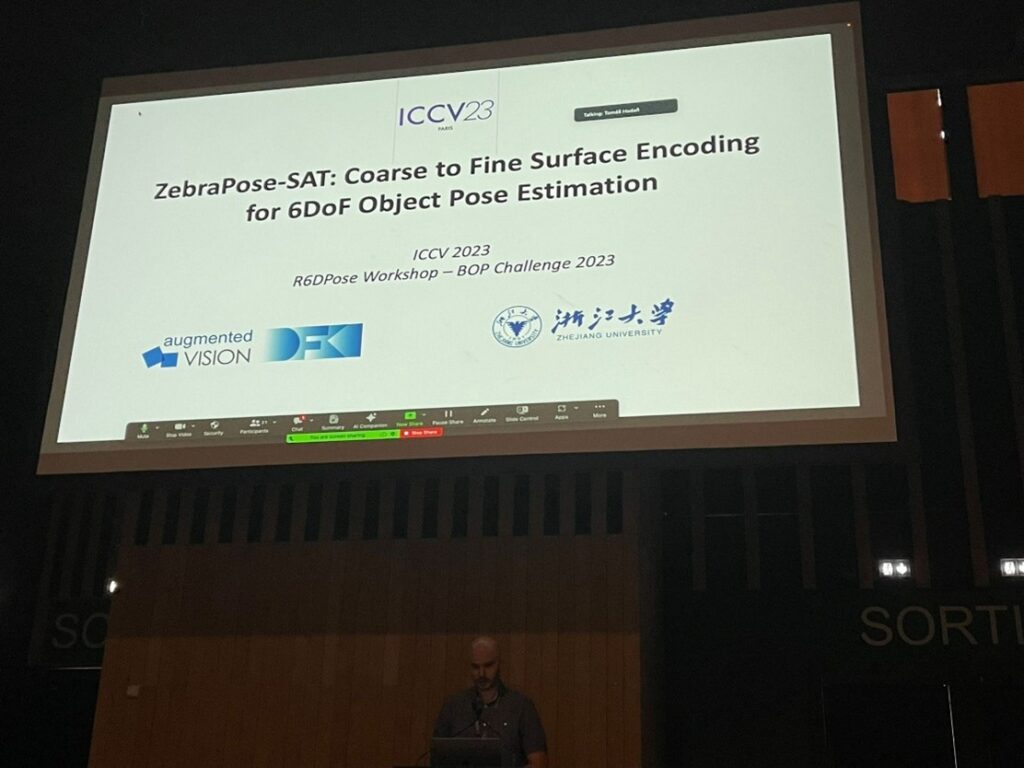
On the 5th and 6th of September 2023, the new EU project dAIEdge “A network of excellence for distributed, trustworthy, efficient and scalable AI at the Edge“ officially took off.
The kick-off meeting held at DFKI in Kaiserslautern was an excellent occasion to meet with the 36 partners from 15 European countries and launch the activities of the network!
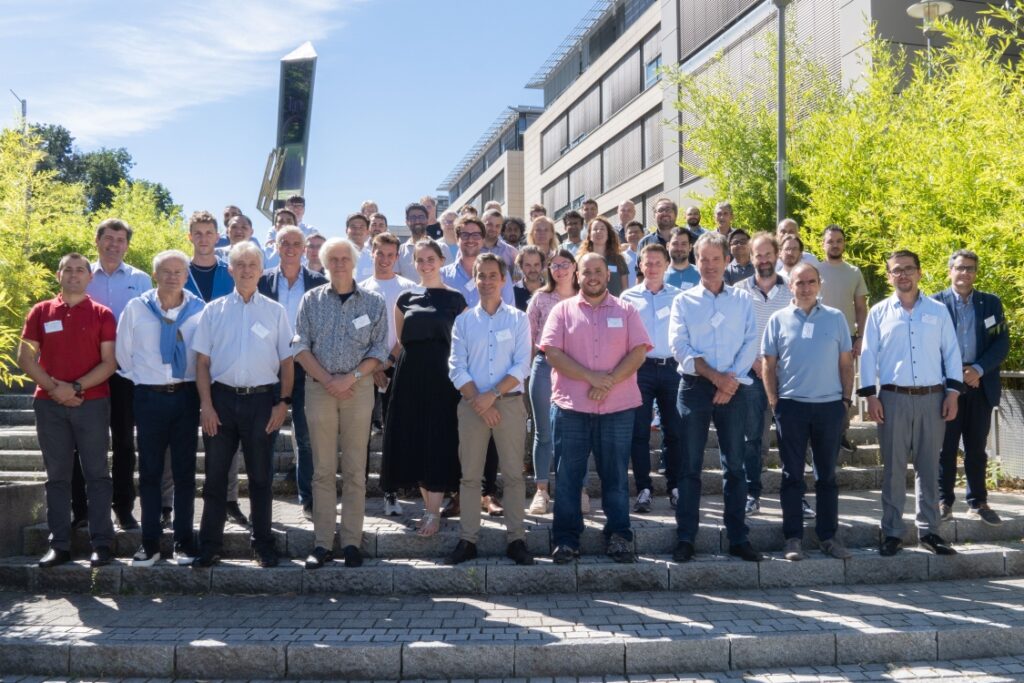
The main goal of dAIEDGE is to support and ensure the rapid development and market adoption of distributed edge AI technologies, such as hardware, software, frameworks, and tools.
The applications of dAIEDGE will be used in a wide range of domains, such as the Internet of Things (IoT), intelligent transportation systems, satellite imagery and robotics.
The network has a project volume of €14.4 million, of which €10.7 million is funded by the European Union. Looking forward to a fruitful collaboration and a successful project!
Contact persons:
DFKI Augmented Vision is collaborating with Stellantis on the topic of Radar-Camera Fusion for Automotive Object Detection using Deep Learning. Recently, two new publications were accepted to the GCPR 2023 and EUSIPCO 2023 conferences.
The 2 new publications are:
1. Cross-Dataset Experimental Study of Radar-Camera Fusion in Bird’s-Eye View, Proceedings of the 31st. European Signal Processing Conference (EUSIPCO-2023), September 4-8, Helsinki, Finland, IEEE, 2023.
Lukas Stefan Stäcker, Philipp Heidenreich, Jason Rambach, Didier Stricker
This paper investigates the influence of the training dataset and transfer learning on camera-radar fusion approaches, showing that while the camera branch needs large and diverse training data, the radar branch benefits more from a high-performance radar.
Cross-Dataset Experimental Study of Radar-Camera Fusion in Bird’s-Eye View
2. RC-BEVFusion: A Plug-In Module for Radar-Camera Bird’s Eye View Feature Fusion, Proceedings of. Annual Symposium of the German Association for Pattern Recognition (DAGM-2023), September 19-22, Heidelberg, BW, Germany, DAGM, 9/2023.
Lukas Stefan Stäcker, Shashank Mishra, Philipp Heidenreich, Jason Rambach, Didier Stricker
This paper introduces a new Bird’s Eye view fusion network architecture for camera-radar fusion for 3D object detection that performs favorably on the NuScenes dataset benchmark.
RC-BEVFusion: A Plug-In Module for Radar-Camera Bird’s Eye View Feature Fusion
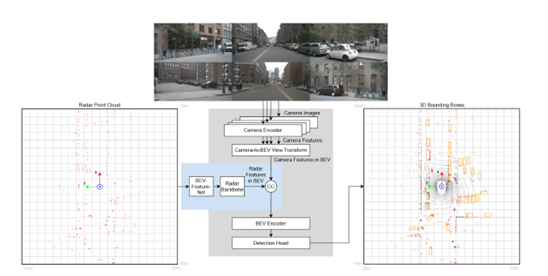
Contacts: Dr. Jason Rambach
We are happy to announce that the Augmented Vision group will present 4 papers in the upcoming ICCV 2023 Conference, 2-6 October, Paris, France. The IEEE/CVF International Conference in Computer Vision (ICCV) is the premier international computer vision event. Homepage: https://iccv2023.thecvf.com/
The 4 accepted papers are:
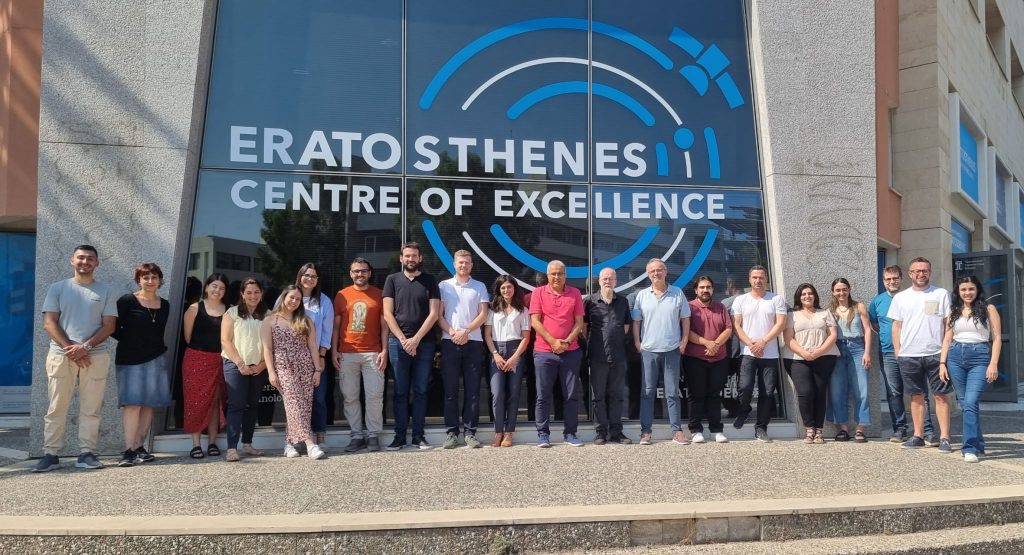
The first AI-Observer Summer School was held at the Eratosthenes Center of Excellence in Limassol, Cyprus, from July 10-14. Training sessions were given by Prof. Fabio Del Frate, Giorgia Guerrisi and Lorenzo Giuliano Papale (Tor Vergata University of Rome), and Dr. Gerd Reis (German Research Center for Artificial Intelligence). During the five-day hybrid event, more than 50 participants learned about the application of artificial intelligence in Earth observation, with special focus on disaster risk management. Topics included deforestation, flood detection, and natural hazard management using Sentinel-1 Synthetic Aperture RADAR (SAR), and Sentinel-2 Multi-Spectral Imaging (MSI) data.
AI-OBSERVER consortium:
Eratosthenes Center of Excellence
Deutsches Forschungszentrum für Künstliche Intelligenz
Università degli Studi di Roma Tor Vergata
Cellock Ltd.
We are glad to announce that our colleague Michael Lorenz won a best Paper award for his work On Motions artifacts arising when integrating inertial sensors into loose clothing such as a working jacket.

The team of the EU Horizon Project HumanTech , consisting of Mahdi Chamseddine and Dr. Jason Rambach from DFKI Augmented Vision as well as Fabian Kaufmann from RPTU Kaiserslautern – department of Civil Engineering, received the 3rd place prize in the Scan-to-BIM challenge of the (Computer Vision in the Built Environment) CV4_AEC Workshop of the CVPR 2023 conference.
On the 18.6, the team presented their solution and results as part of the workshop program. Scan-to-BIM solutions are of great importance for the construction community as they automate the generation of as-built models of buildings from 3D scans, and can be used for quality monitoring, robotic task planning and XR visualization, among other applications.

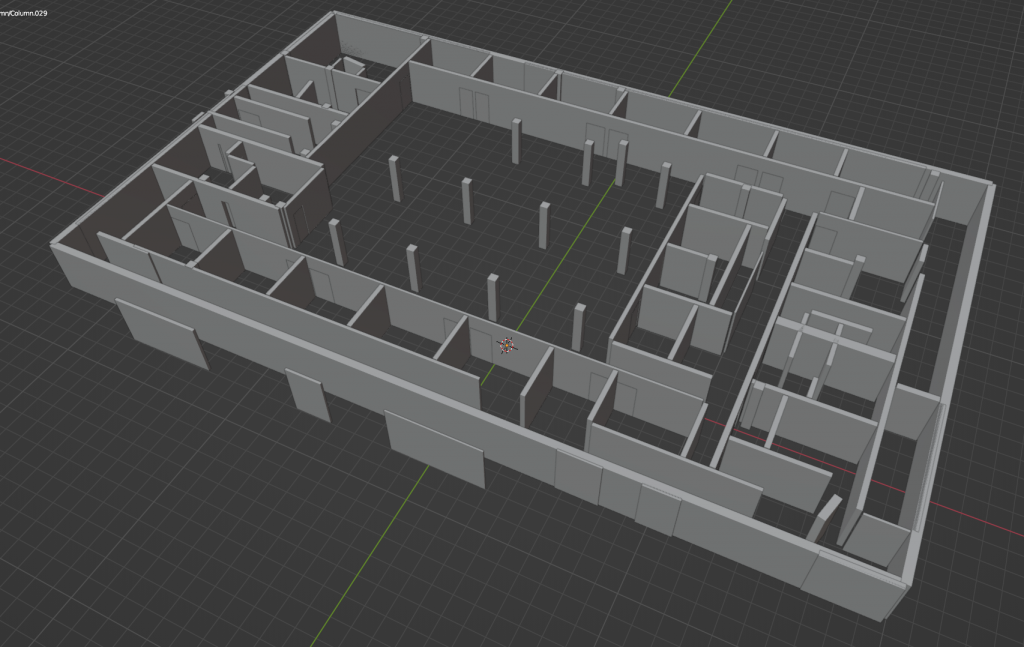
HumanTech project: https://humantech-horizon.eu/
CV4AEC Workshop page: https://cv4aec.github.io/
Contact: Dr. Jason Rambach , Mahdi Chamseddine
Dr. Jason Rambach, coordinator of the EU Horizon Project HumanTech co-organized a special session on “Human Factors in Construction Robotics” at the IEEE International Conference on Advanced Robotics and its Social Impacts (ARSO 2023) in Berlin, Germany (5.6-7.6). The organization of the special session was done by Jason Rambach, Gabor Sziebig, Research Manager at SINTEF, and Mihoko Niitsuma, Professor at Chuo University.
The program of the special session included the following talks:
HumanTech project: https://humantech-horizon.eu/
Contact: Dr. Jason Rambach
